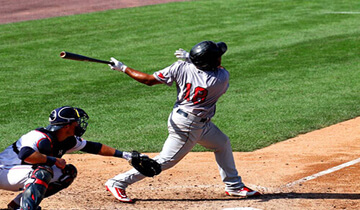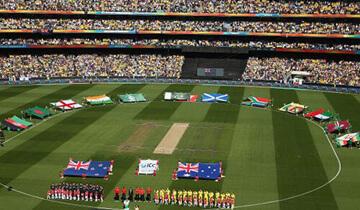Introduction: Soccer, the world’s most popular sport, is not without its problems when it comes to player behavior and discipline. Cases of diving, fake injuries, harassment of referees, and violent conduct on the field have become too commonplace in the modern game. To address this issue, there have been calls for reforms to the disciplinary system used in soccer to better curb unsportsmanlike behavior and make the game cleaner.
Overview of the Yellow Card Plan
What is a Yellow Card?
A yellow card in soccer is a caution given to a player by the referee for fouls, dissent, persistent infringement, delaying restart, and other misconduct. It serves as an official warning.
Key Elements of the Plan
One proposal that has gained some traction is known as the “Yellow Card Plan.” This plan aims to build upon the existing use of yellow cards in soccer as a caution for players who commit fouls or display poor conduct. Under the plan, stricter punishments would be enacted for players who accumulate yellow cards, both in individual games and over the course of a season.
Sin Bin Exclusions
The most significant change under the Yellow Card Plan would be the introduction of “sin bin” exclusions for players who receive two yellow cards in a single match. Rather than be sent off the field entirely, as happens now with a red card, the player would be excluded to a designated “sin bin” area for 10 minutes before being allowed to return. This temporary exclusion would serve as an immediate punishment and incentive for players to avoid persistent fouling or misconduct after an initial yellow card.
Escalating Seasonal Punishments
The plan also introduces escalating punishments for accumulating yellow cards over multiple games in a season. The first proposed level is a one-game ban for any player who accrues five yellows in a season. For 10 accumulated yellows, a two-game ban would be imposed. And any player reaching 15 yellow cards in a campaign would face a three-game ban as a significant deterrent. These punishments would reset at the start of each new season.
Analysis of Potential Impact
Proponents believe the Yellow Card Plan could have a major impact on soccer’s disciplinary problems by modifying an existing system rather than introducing radical new measures. The use of incremental punishments and sin bins preserves the flow of games better than straight red cards while also creating clear consequences for serial misconduct.
Critics argue it may simply lead to players doing more to avoid a second yellow and could interrupt the flow of games anyway with repeated sin bin exclusions.
In the end, the Yellow Card Plan represents an intriguing idea for reforming on-field behavior in the world’s game. With more testing and refinement, some form of the plan could potentially be introduced by leagues or tournaments looking to make soccer more respectable without changing its fundamental character and continuous flow of play. Achieving the right balance will be key to making any new disciplinary measures successful.
The history of the yellow card system and how it relates to the Yellow Card Plan proposal:
The Yellow Card System: From Origins to Proposed Reform
The yellow card is an integral part of soccer’s disciplinary system, used to caution players for misconduct during matches. With origins dating back over 50 years, this simple card has become an iconic symbol of the sport. Understanding the background of the yellow card can provide perspective on recent proposals to modify and expand its use through ideas like the “Yellow Card Plan.”
The Invention of Yellow and Red Cards
The yellow card system was first introduced at the 1970 FIFA World Cup in Mexico. The concept was created and proposed by Ken Aston, a former English referee and head of refereeing for FIFA.
Aston drew inspiration from traffic lights to create a visual system to communicate misconduct to players and spectators. Yellow would indicate a caution for more minor incidents, while red signified sending a player off for serious offenses. Prior to this, referees relied solely on spoken warnings.
The color scheme proved highly effective, and yellow and red cards were officially incorporated into the Laws of the Game in 1976. Since then, they have been adopted universally across all levels of soccer.
Evolution in Implementation
While the meaning of yellow and red cards has remained consistent, the specific guidelines on their use have been updated and expanded by FIFA and other governing bodies over the decades.
There is now clearer guidance on when cards should be used for infringements like delays, dissent, persistent fouling, and unacceptable conduct. The powers of referees to flash cards have also increased.
However, the fundamental visual symbolism of yellow for caution and red for expulsion endures as Aston envisioned.
Connections to Proposed Reforms
This history helps explain why recent plans like the “Yellow Card Plan” focus on building upon the existing yellow card system rather than inventing totally new disciplinary measures.
The yellow card is already so deeply ingrained in players, fans, and officials across generations. Expanding the consequences of accumulated yellows across matches represents a more incremental change leveraging something already familiar to the sport.
While debates continue over specific reforms, the origins and longevity of the yellow card system provide a useful foundation as soccer continues striving to improve player conduct and the beauty of the game.
What Does a Yellow Card Mean?
The yellow card holds an important meaning and functions in multiple ways within a soccer match:
-
It is used by the referee to officially caution or warn players when they commit fouls or display misconduct. Common yellow card offenses include rough tackles, deliberate handballs, time wasting, and dissent towards officials.
-
When giving a yellow card, the referee records the offending player’s name, the time of the offense, and a description of the infringement. This creates an official record of the incident.
-
Receiving a yellow does not force a player to leave the field. This contrasts with a red card, which results in an ejection. However, two yellows in the same game equate to a red card.
-
A yellow card signals that the player must immediately cease their offenses or risk stricter punishment. It is meant as both a warning to the individual and a disciplinary measure to deter future misbehavior.
-
From an in-game perspective, yellow cards may also influence coaching strategy if a player is at risk of a second caution or if the team is short-handed.
-
Yellow cards also accumulate on a player’s disciplinary record. This can lead to fines, suspensions, or bans if too many are accrued over a period of time.
So while a single yellow card enables a player to stay on the field, it carries immediate weight due to its implications for game flow, tactical adjustments, reputation, and potential future punishments based on the official record. This multi-layered significance and function is central to the role yellow cards play in managing conduct in soccer.
Here is a draft section covering the common offenses that can warrant a yellow card in soccer:
Offenses that Lead to Yellow Cards
Referees have considerable discretion when deciding whether to issue a caution, but there are several offenses that routinely result in yellow cards:
-
Unsporting behavior - This covers a wide range of transgressions like simulation (diving/embellishment), overly excessive goal celebrations, interfering with throw-ins, and deliberately handling ball after scoring.
-
Dissent - Arguing with or disrespecting the referee’s decisions, as well as ignoring instructions from officials. Persistent dissent can lead straight to a red card.
-
Persistent infringement - Repeatedly fouling or breaking rules throughout the match. The yellow serves as a warning to cease.
-
Delaying the restart of play - Deliberately slowing the speed at which play resumes after stoppages, such as holding onto the ball excessively.
-
Not respecting the required distance - Failure to retreat the proper distance during set pieces and free kicks.
-
Leaving or re-entering the field without permission - Players must receive referee approval first.
-
There are also yellow cards specifically for goalkeepers who infringe rules inside their penalty area through actions like controlling the ball with their hands for too long.
The laws list additional situations that may warrant a caution. But generally, referees will consider the severity and context of the offense before brandishing a yellow. While it is meant as a warning, too many accumulated yellows can lead to suspensions.
123
Here is a draft section covering the consequences of receiving a yellow card:
Consequences of a Yellow Card
Some key consequences stem from a player being issued a yellow card during a game:
-
The player is allowed to remain on the field and continue playing, unlike a red card which results in ejection.
-
However, a yellow card puts the player just one infraction away from getting a second yellow and automatic red card. This makes the player vulnerable for the remainder of the match.
-
Coaches may be inclined to substitute off a player who has a yellow in order to avoid going down to 10 men if a second yellow occurs.
-
Yellow cards are officially recorded and accumulate on a player’s disciplinary record over a tournament or season.
-
Based on yellow card totals, players can face additional punishments like match bans. For example, UEFA competitions ban players for one game after three yellows in the Champions/Europa Leagues.
-
Excessive yellows over a season in league play can also result in fines or extended suspensions. Premier League players get an automatic one-match ban after accumulating 5, 10, 15, and 20 yellows.
-
At the international level, two yellows over separate World Cup matches leads to a one-game ban.
So while less severe than a red in the moment, yellow cards critically impact strategy for the current game and all remaining fixtures based on the risk of disciplinary points that carry future consequences. This is a key aspect of yellow cards that reform proposals like the “Yellow Card Plan” seek to expand.
The Role of the Referee in Soccer - Key Powers of the Referee
Issuing Yellow and Red Cards
One of the key powers of the referee is the ability to caution or send-off players. Yellow cards are used to officially warn players for unsporting behavior, dissent, persistent infringement of the laws, delaying the restart of play, and other minor offenses. Two yellow cards result in a red card, which sees the player ejected from the match. Red cards are used for serious foul play, violent conduct, spitting, denying an obvious goal-scoring opportunity through handball, and fouls against an opponent moving towards goal. The strategic use of cards is vital for maintaining control of the game.
Communication
Effective communication skills are essential for referees. The referee must use clear hand signals and whistles to indicate decisions, as well as being vocal with players. Good communication helps explain decisions, defuse confrontation, and keep the game moving smoothly.
Enforcing Laws of the Game
The referee is the sole judge on the field responsible for interpreting and enforcing the laws. This includes making judgment calls regarding fouls, offside, penalties, and improper conduct. The referee must be fully versed in the laws and their correct application.
Disciplinary Decisions
Based on the referee’s enforcement of the laws, they have the power to stop play, suspend or abandon games, and take disciplinary action against players/team officials. This includes cautions, send-offs, and ordering players off the field.
Control and Authority
Referees must exude control and authority throughout matches. Their decisions are final. Referees must be confident and professional in their conduct.
Importance of Yellow Cards
The use of the yellow card is central to how referees officiate soccer matches. Along with effective communication, yellows provide referees with an instant formal sanction to penalize illegal actions by players. When applied properly and strategically, cards allow referees to enforce the laws of the game and maintain control, contributing to more fair and enjoyable soccer for all.
Conclusion: The Important Role of Yellow Cards in Soccer
The referee is critical to officiating a soccer match and upholding the Laws of the Game. A key tool for referees is issuing yellow and red cards to players.
Yellow cards allow referees to immediately caution players for illegal actions like unsporting behavior, dissent, persistent fouling, and delays. This formal warning indicates the player has committed an offense worthy of sanction. Two yellows leads to ejection.
Effective communication, proper interpretation of the laws, and authoritative control are also vital referee skills. Their judgments shape the game’s fairness.
In conclusion, receiving a yellow card has an important meaning in soccer. It signifies the player has violated the rules and must immediately modify their conduct. Yellows allow referees to regulate player actions, maintaining the integrity of the sport. Players should work to avoid such offenses and respect the referee’s decisions.







































